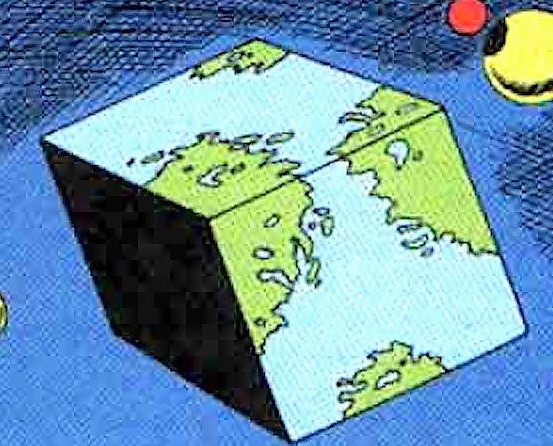Seems to my ignorant eyes that we could always somehow split the power received into more manageable units, even if it has to be splitted a million times, 🤷♂️.
Cant predict it, cant store it, cant get it where it needs to be
Not that I think it’s practical or that it should be done, but I think it’s mildly interesting that Texas could be an answer to all three of those things.
Texas gets a ton of lightning, has a large battery company (Tesla), and probably needs the power the most.
skeld@lemmy.world did the math below. It’s a little impractical, particularly for Tesla to engineer.
That’s what she said?
I think the difficult part with harnessing lighting is the consistency of it. We would need to build in places where thunderstorms are common, which will only be true for particular seasons. The other limitation is the battery technology that we currently have. It could be a better resource if we could find a way to store electricity in a non-degrading system. I think the new solid state batteries are supposed to be that way, but I don’t know enough about them or this topic to really say. Alternatively, we can just pump people full of radiation until one of them becomes a weather controlling mutant so we can have infinite thunder storms.
It would also be interesting if we had a way to greatly increase the chance of lightning in a small area, but by that point, we’re probably still not justifying the cost of that R&D.
There is that place in Venezuela where it’s pretty much always lighting.
Here is an alternative Piped link(s): https://piped.video/Vcgapgrqf4w
Piped is a privacy-respecting open-source alternative frontend to YouTube.
I’m open-source, check me out at GitHub.
No it’s not weird that we don’t talk about harnessing something that we can’t predict more than a few seconds in advance.
Do you also think it’s weird we don’t plan our entire day to avoid getting hit by meteorites?
You can farm lighting with a model rocket. Hell, the Empire State Building gets struck several times a year.
We just don’t have anything that can capture and store that much power easily, and smoothing that power into stable, reliable energy would be harder than Matt Gaetz at a elementary school luncheon.
harder than Matt Gaetz at a elementary school luncheon
god-tier analogy right there
I know you are sorta joking, but humans collectively have spent billions on mapping out our solar system with the explicit goal of predicting meteorites. There is active monitoring trying to see meteorites before they hit. And it is actually a fulltime job for a lot of people to plan for, scan for and predict meteor impacts.
Good thing is, we are very good at it. We know pretty much for sure there isn’t going to be a big impact for the next 100 years caused by an object in our solar system. They are currently working on sizes that would cause a big issue if it were to hit a city. Of course chances such an impact would be in the ocean or a less densely area are big, but still it’s good to check.
It’s a nice idea, but it’s too unreliable. And infrequent.
Wondered the same, learned its too unreliable where it hits and not consistant enough. Thats also a big issue with renewable energy now, we dont have a proper way to store overloads and have to acually waste it currently.
Nikola Tesla had this back in 1887. Big business couldn’t figure out how to make enough money off it so it died out.
RADIANT ENERGY - UNRAVELING NIKOLA TESLA’S GREATEST SECRET: https://teslauniverse.com/nikola-tesla/articles/radiant-energy-unraveling-nikola-teslas-greatest-secret
That’s about his theory of Radiant Energy, not lightning strikes.
…shouldn’t you be in 1985?
“One point twenty one jigawatts!”
i’ve brought it up with different engineers, everyone said it’s basically impossible, it is just too strong
There’s a retired astronaut whose entire post-NASA career has been devoted to developing a plasma propulsion engine. Which is kind of (though not exactly) what you’re thinking of.
Voltage rises with altitude, it’s theoretically possible to raise one end of a well insulated wire very high into the sky and jam the other end into the Earth to draw current from the sky.
This isn’t exactly harnessing lighting, more like harvesting the energy in lightning before it strikes.
Lighning to a power generator is what atomic bomb is to a nuclear reactor. If you had no means of predicting when and where the bomb will go off.
There are so many better options.
More like a fire cracker compared to a nuclear reactor, lightning isn’t all that powerful.
You couldn’t predict it, but you can kind of coax where it will strike with lightning rods. If you could send the power to a battery of some kind to be discharged when needed, that’d be handy. Never hurts to have extra energy lying around in storage.
Lightning has a peak power of 1TW for 30 microseconds according to Wikipedia, corresponding to an energy content of about 8000 Watt-hours. That is enough to run a 100 watt conventional light bulb for 80 hours, so not actually much energy. You would need to capture about half a million lightning strikes a second if you wanted to power the world that way, for example.
I thought a bolt of lightning can produce 1.21 gigawatts? Doc Brown said this in Back to the Future movie.
Unless you can control the weather which if it was possible, would likely take lots of energy ans is the only way to make a “lightning power plant” to my understanding.
Remember how hard it was to capture a lightning bolt in Back to the Future movie? The only reason they succeeded was because they knew when and where lightning will strike in a week and they timed it out perfectly.












